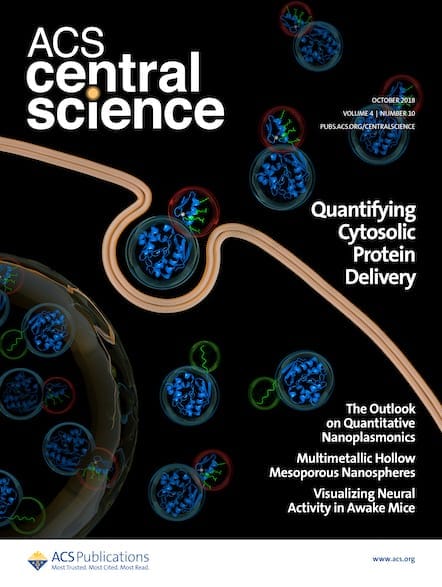Many diagnostics for viral diseases require complicated techniques to prepare or interpret samples, making them impractical for point-of-care or resource-poor settings. But new research showcases sensitive methods using glow-in-the-dark proteins.

Depending on where you live, you may already be witnessing fireflies twinkling across the grass or in the sky during the evening hours. These nighttime light shows can be credited to luciferase, the enzyme responsible for bioluminescence. In addition to igniting fireflies’ bright sparks, luciferase is behind the glow of around 30 other living systems, including anglerfish, phytoplankton, and sea pansies. But beyond its presence in nature, luciferase is also a vital component for a variety of applications in biomedicine, therapeutics, and sensing.
Biosensing: COVID-19 and Beyond
Identifying pathogens by detecting their nucleic acid is a key strategy in clinical diagnostics, biomedical research, and food and environmental safety monitoring. Luciferase-based biosensors have proven to be vital components during the COVID-19 pandemic, both in the study of the virus and in drug development. These tools could be a key to solving future pandemics as well as surrogate markers for understanding how viruses function.1
Current CRISPR-based techniques for identifying pathogens based on their nucleic acid fingerprints have also shown promising potential for detecting COVID-19, but most of these methods rely on fluorescent or lateral flow assays, which can give way to scattering and hinder sensitivity in more complex samples such as blood plasma.
To address this, a team in The Netherlands developed a bioluminescent sensor (LUNAS), in which target dsDNA is detected by a pair of probes mediating split NanoLuc luciferase complementation.2 NanoLuc is a stable engineered luciferase that produces bright blue luminescence by converting furimazine to furimamide,3 and sensor proteins based on intramolecular complementation of split NanoLuc are particularly attractive as the design allows for systematic tuning of sensor properties.4
In their new work, the researchers demonstrate that LUNAS can be easily integrated with recombinase polymerase amplification (RPA), providing a highly sensitive platform for dsDNA detection—and enabling real-time monitoring using a simple digital camera. They tested diagnostic performance by collecting swab samples from COVID-19 patients, confirming detection within 20 minutes for samples with viral RNA loads of around 200 copies per μL. These findings make RPA-LUNAS an attractive candidate for point-of-care infectious disease monitoring.2

COVID-19: Where Are We Now?
Luciferase and bioluminescent immunoassays could also prove useful in the fight against cancer by effectively measuring a wide panel of cancer cell surface biomarkers directly in solution, which could significantly improve early detection rates.5 It could also be harnessed for cellular assays to detect zinc deficiency—a risk for 17% of the global population—and one which results in impaired growth, neural dysfunction, and imbalanced immune response.6
Another important use for bioluminescence could be in noninvasive longitudinal imaging of drug activity, as evidenced by a recent study in ACS Central Science that looks at kinase-modulated bioluminescent indicators (KiMBIs). Irregular kinase activity contributes to brain cancers, neurodegeneration, and neuropsychiatric disease, and identifying kinase inhibitors that function in the brain is challenging because the blood–brain barrier prevents entry of most compounds. However, the KiMBI was able to differentiate between brain-penetrant and nonpenetrant inhibitors, revealing tumor leakiness in xenograft models and reporting on inhibitor pharmacodynamics in native brain tissue. This rapid pharmacodynamic characterization could help to identify new treatment options for brain diseases.7
References
- Azad, T. et al. Luciferase-Based Biosensors in the Era of the COVID-19 Pandemic. ACS Nanosci. Au 2021, 1, 1, 15–37.
- van der Veer, H. J. et al. Glow-in-the-Dark Infectious Disease Diagnostics Using CRISPR-Cas9-Based Split Luciferase Complementation. ACS Cent. Sci. 2023, 9, 4, 657–667.
- England, C. et al. NanoLuc: A Small Luciferase Is Brightening Up the Field of Bioluminescence. Bioconjugate Chem. 2016, 27, 5, 1175–1187.
- Gräwe A. and Merkx, M. Bioluminescence Goes Dark: Boosting the Performance of Bioluminescent Sensor Proteins Using Complementation Inhibitors. ACS Sens. 2022, 7, 12, 3800–3808.
- van Aalen, E. A. et al. Bioluminescent RAPPID Sensors for the Single-Step Detection of Soluble Axl and Multiplex Analysis of Cell Surface Cancer Biomarkers. Anal. Chem. 2022, 94, 17, 6548–6556.
- Michielsen, C. et al.Ratiometric Bioluminescent Zinc Sensor Proteins to Quantify Serum and Intracellular Free Zn2+. ACS Chem. Biol. 2022, 17, 6, 1567–1576.
- Wu Y, et al. Kinase-Modulated Bioluminescent Indicators Enable Noninvasive Imaging of Drug Activity in the Brain. ACS Cent. Sci. 2023, 9, 4, 719–732.
